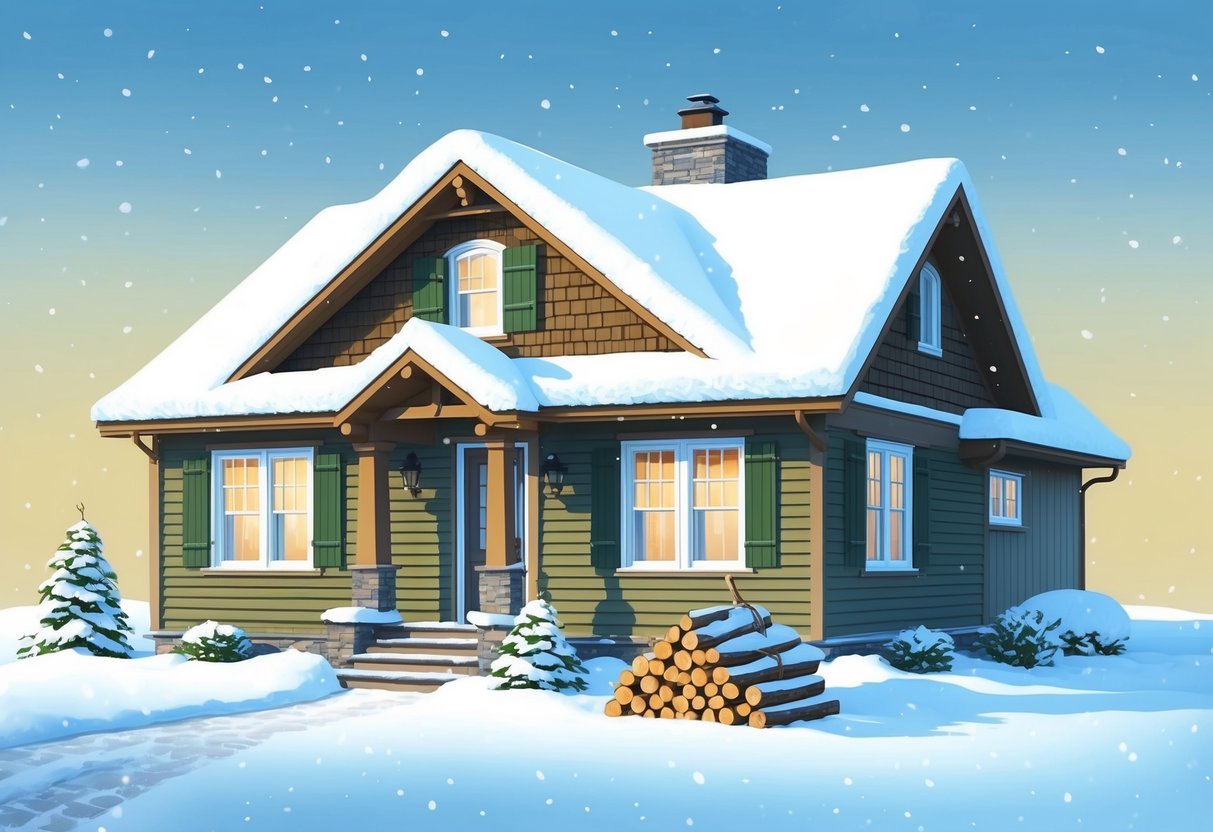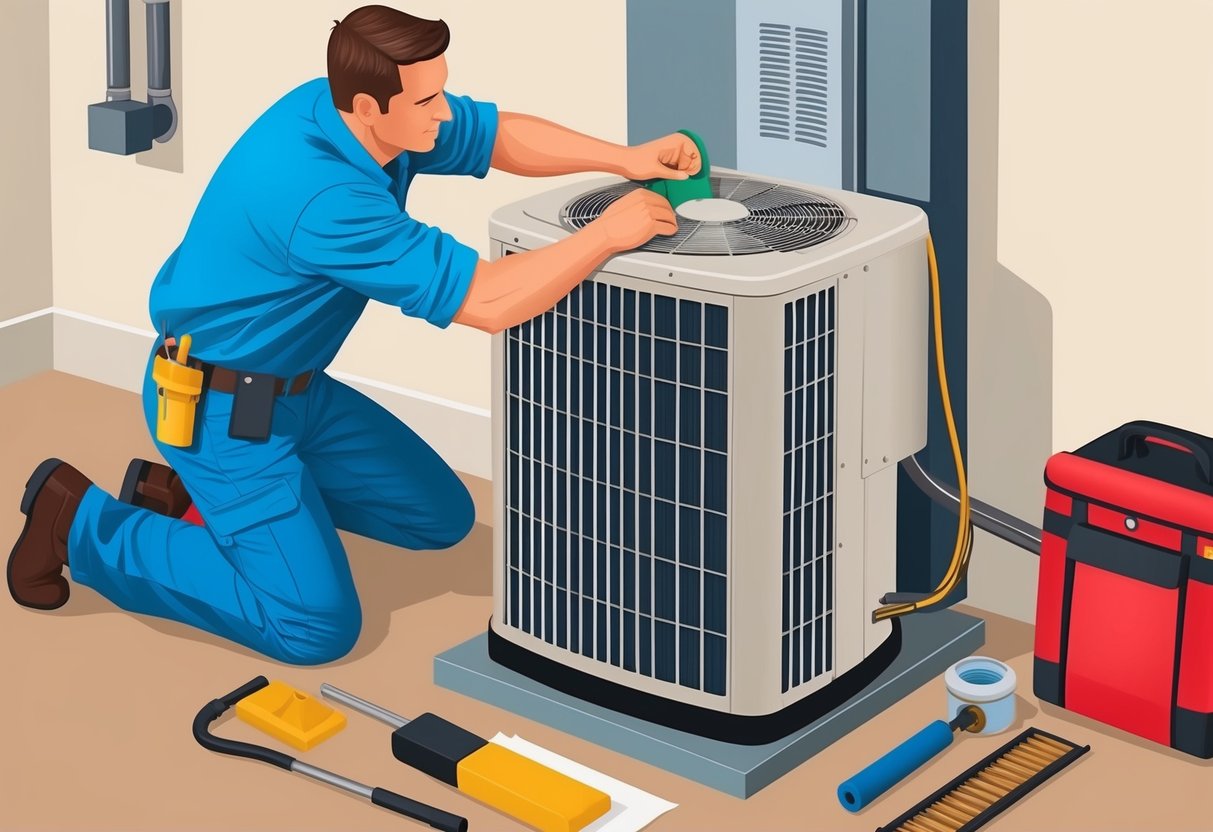
Fall Home Maintenance Priorities

Homeowners should address vital maintenance tasks in the fall to prepare for temperature changes and prevent damage from moisture and cold. Focusing on HVAC systems and protecting the building envelope can improve comfort and reduce expensive repairs.
Preparing for Cooler Temperatures
As fall arrives, heating systems demand extra attention. Annual servicing of furnaces or heat pumps helps ensure reliable operation and maximum efficiency during cold spells.
Change air filters, clear any blockages in vents, and check thermostats for proper function. Arrange for a professional inspection to detect leaks or worn parts before they cause malfunctions.
In homes with fireplaces or wood stoves, chimney cleaning is essential to prevent chimney fires and improve indoor air safety. Inspect smoke and carbon monoxide alarms monthly and replace old batteries if needed.
A checklist is helpful for tracking tasks like these:
| Task | Frequency |
|---|---|
| Furnace inspection | Every fall |
| Air filter replacement | Every 1-3 months |
| Chimney cleaning | Annually |
| Smoke/CO alarm check | Monthly |
Read more about HVAC and heating priorities at the 2025 Fall Home Maintenance Checklist.
Sealing Drafts and Exterior Protection
Sealing drafts is one of the most effective ways to conserve heat and reduce heating costs. Inspect window frames, door jambs, and any exterior wall penetrations for gaps.
Apply weatherstripping or use fresh caulking wherever air leaks are found to block cold drafts and keep rooms warmer. Exterior protection is crucial as rainfall and falling temperatures increase.
Check siding, roofing, and gutters for signs of wear, missing shingles, or leaks. Repair or replace faulty sections to prevent water intrusion during autumn storms.
For instance, clean and reseal decks, touch up exterior paint, and fix damaged trim to protect surfaces exposed to the elements. More details on thorough home exterior repairs and updates can be found in several fall maintenance guides.
Winter Home Preparation & Protection

Proper winter home maintenance requires focusing attention on key areas that can be affected by low temperatures and harsh weather. Taking proactive steps not only prevents costly repairs but also creates a safer and more efficient living environment.
Safeguarding Against Snow and Ice
Exterior home protection begins with regular roof and gutter inspections. Homeowners should clear away leaves and debris from gutters to avoid blockages that lead to ice dams.
These dams can cause melted snow to back up under shingles, resulting in water leaks inside the home. Roof edges and valleys should be checked for existing ice buildup.
Steps for snow and ice management include applying calcium chloride de-icer to walkways, and using roof rakes to remove heavy snow from eaves before it accumulates. Window and door seals must be checked and replaced if worn, since gaps let in cold air and raise heating costs.
Pipe insulation in unheated spaces like basements and garages further reduces the risk of frozen, burst pipes. Additional steps like removing garden hoses and draining outdoor faucets are often recommended in comprehensive winter maintenance checklists.
Heating System and Chimney Care
The heating system needs annual servicing by a certified technician. This includes changing air filters, ensuring efficient operation, and uncovering small issues before they develop into costly problems.
Thermostat batteries should be checked and replaced as needed, and programmable settings adjusted for colder months. For homes with fireplaces or wood stoves, chimney cleaning and inspection are crucial for both efficiency and fire safety.
Creosote buildup increases chimney fire risk, and blockages can result in dangerous carbon monoxide buildup. Flue caps and dampers should be inspected for secure fit and damage.
Preventing heat loss can also be supported by closing fireplace dampers when not in use and using glass doors or a draft stopper where appropriate. Following the advice in trusted maintenance guides can help ensure no critical step is missed in the preparation process.
HVAC System Maintenance and Servicing

Keeping an HVAC system running efficiently requires periodic care and the right servicing routines. Consistent upkeep not only maintains indoor comfort but also extends the lifespan of key heating and cooling components like air filters, thermostats, and condensers.
Importance of Regular HVAC Maintenance
Routine HVAC maintenance reduces energy consumption and helps prevent unexpected breakdowns. Replacing air filters every 1–3 months keeps airflow optimal and improves indoor air quality, which is particularly important for households with allergies or pets.
Dust can quickly accumulate on air vents and registers, so regular cleaning is essential to avoid restricting airflow and overworking the system. Homeowners are encouraged to inspect electrical components, tighten loose connections, and lubricate moving parts when needed.
Outdoor components such as the air conditioning unit should be kept clear of leaves, dirt, and other debris. This ensures effective heat exchange and prevents mechanical strain during operation.
Specialized maintenance details like refrigerant line inspection and ensuring the unit remains level are also important, as highlighted in this HVAC maintenance checklist.
HVAC System Service Schedule
Following a scheduled service plan keeps equipment reliable through every season. Most experts recommend changing filters every 30 to 90 days and cleaning vents or registers at least twice a year as part of a consistent HVAC system maintenance routine.
Homeowners should check thermostat functionality monthly, especially before seasonal transitions. Outdoor systems benefit from spring and fall inspections to address weather-related wear, refrigerant leaks, and blocked drainage lines.
A professional HVAC service is advised annually. This includes comprehensive checks for electrical safety, calibration of controls, and verification that all components operate as intended.
These tasks support system longevity and keep heating and cooling costs predictable year-round.